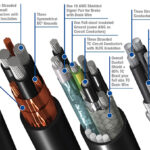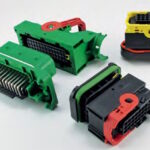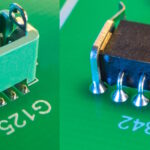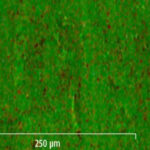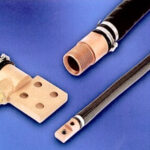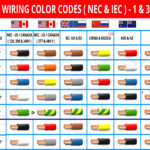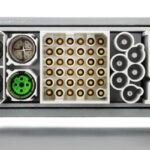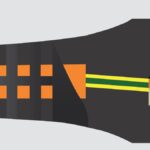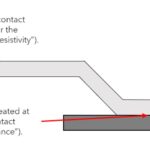The three basic types of shielding for electromagnetic interference (EMI) in cables include strands of braided copper and similar metals, spiral shields, and foil or tape shields. They can be used separately or in combination. This FAQ begins with a review of the three types of shielding, then considers how they are used in combinations […]
faq
What are the six connector locking mechanisms?
Various locking mechanisms are found on connectors including bayonet, latch, lever, push-pull, screw, and snap-in. These represent the more common styles, not an exhaustive list. Locking connectors can support several functions like assisting coupling and uncoupling and improving the environmental ruggedness of the connection in addition to enhancing mechanical performance and preventing accidental uncoupling. This […]
What are the five connector contact termination styles used for?
The five basic connector contact termination styles include solder, press-fit, clamp, crimp, and insulation displacement (IDC). In some cases, there are variations. This FAQ focuses on the termination of electrical signals, not fiber optic termination styles. Selecting the best termination style is important since the terminations provide stable electrical and mechanical connections and need to […]
What is electric vehicle supply equipment (EVSE)?
EVSEs provide power to charge EV batteries at Level 1 and Level 2 voltage ratings. Electric vehicle (EV) owners rely on electric vehicle supply equipment (EVSE) to charge their batteries efficiently. Often referred to as charging stations or docks, EVSEs provide a reliable and safe connection between EVs, the electric grid, and other energy sources. […]
What plating options are available for high-power connectors?
Plating options are numerous and tend to fall into four categories: noble metals, passive metals, alloys, and dispersions. The first three categories are well established, while dispersions are just beginning to appear in response to the need for high-power connectivity in electric vehicle (EV) charging and similar applications. This FAQ starts with a brief review […]
Where are liquid-cooled industrial connectors used?
Liquid-cooled connectors are used in high-current, high-power industrial applications like electrochemical processes, welding, induction furnaces, electric arc furnaces, electrothermic processes, and electromagnets. This FAQ looks at various liquid-cooled cable and connector structures for carrying up to 60 kA. Two keys to optimizing the performance of liquid-cooled connectors and cables are minimizing the resistance in the […]
What standards apply to heavy-duty and industrial connectors?
There are numerous standards for heavy-duty connectors (HDCs) and general industrial connectors. An HDC is defined as a rectangular connector that can handle power, data, and signal pins in a single housing and is designed for use in challenging industrial and transportation environments. They are a subset of general industrial connectors. This FAQ does not […]
What’s a heavy-duty industrial connector?
A heavy-duty industrial connector (HDC) is a rectangular connector that can handle power, data, and signal pins in a single housing and operate in harsh environments. While there are also standardized circular industrial connectors, they are not classified as HDCs. HDCs are found in robotics, automation, machine control, power conversion, and motion control applications. This […]
How to improve contact reliability and security in HVAC/harsh environments
Contact security and reliability are important considerations when designing heating ventilation/air conditioning (HVAC) systems and other equipment for use in harsh environments, like outdoors or in industrial facilities. Well-established standards like RAST connectors provide a good alternative, but some applications demand more. Challenges include environmental sealing, contact retention, position optimization, and locking power connectors together […]
What are the key tests for HVAC/harsh environment connectors?
Connectors are complex assemblies whose performance is based on interactions of electrical, mechanical, environmental, and materials factors. Extensive testing is required to ensure proper performance, and numerous industry standards have been developed for that purpose. This FAQ reviews 13 tests across three key performance indicators for connectors, including electrical, mechanical, and environmental considerations for connectors […]

